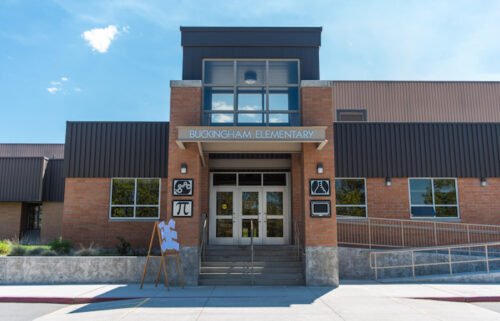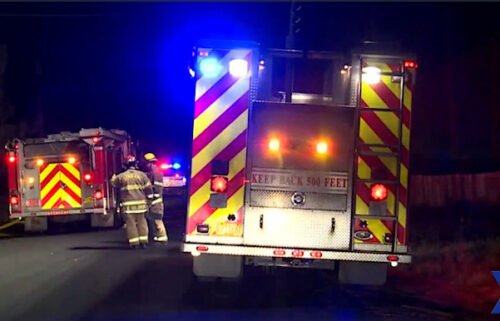Is Measure 110, one of Oregon’s most controversial measures ever, working after nearly 3 years?
(Update: Adding video, comments from BestCare CEO, Deschutes County DA; OHA update with new stats)
BEND, Ore. (KTVZ) -- In November 2020, Oregon voters, by a 17% margin, approved Ballot Measure 110, which aimed to reduce penalties for possession of hard drugs such as meth, heroin and fentanyl, while at the same time directing more funding toward treatment of drug abuse.
"Decriminalizing the possession of hard drugs takes away a big part of the incentive for people to go into treatment," Deschutes County District Attorney Stephen Gunnels told NewsChannel 21 on Wednesday.
Measure 110 went into effect on Feb. 1, 2021. It aims to reduce penalties for possession of controlled substance offenses from a felony or misdemeanor to a $100 maximum fine, and no criminal penalties.
Rick Treleaven, the CEO of BestCare Treatment Services in Redmond, explained, "People coming to us are more addicted, and they're more at risk of death than we've ever seen."
The money collected from the $100 fines is supposed to assist in funding treatment services, like BestCare.
Treleaven says while he now sees the positives in Measure 110, he initially voted no three years ago and still thinks the goals were taken in the wrong order: "I think we needed to have stood up the services, tested them to see that they were working, and then work towards decriminalization."
For Gunnels, the decriminalization part of the measure has eliminated the incentive for people to seek treatment for drug issues.
"In the vast majority of cases" he said, "people who are given tickets for possession of drugs don't even show up to court. About 1% of people who are given a ticket actually gets a drug evaluation. So it's obviously not had the effect that was intended by the ballot measure."
While the county's top prosecutor doesn't feel the measure has enough teeth in the justice system, Treleaven feels the treatment side of the measure is working as proposed.
"Since we started doing the extensive outreach and engagement, our referrals into our outpatient services and into medication supported treatment has tripled in that time," he said.
According to Treleaven, BestCare is seeing 3,000 to 4,000 patients a month statewide. He also said he feels medication assisted treatment programs, like the one being offered at the Deschutes County Jail, is one positive outcome of the measure.
Gunnels, on the other hand, believes the measure has also opened the door for people to use hard drugs with no consequences.
"The decriminalization of hard drugs has led to more people overdosing and dying and fewer people who are getting into treatment," he said. "When possession of drugs was criminalized, people had a reason to go to treatment, because the judge ordered them to go. That can't happen now."
Treleaven said, "The crisis on the street is so big, that it's really an 'all hands on deck' kind of approach. So it can't just be one or the other, it needs to be all of the above."
According to Oregoncourts.gov, Deschutes County has issued 219 tickets for violations since Feb. 1, 2021, making it the seventh-highest among all counties in Oregon.
--
Here is a news release issued Wednesday by the Oregon Health Authority on the treatment progress made so far under Measure 110:
Measure 110 data report show gains continued in clients served substance use treatment and other service and supports
SALEM, Ore. — Measure 110 providers reported continued increases in the number of clients served statewide in all seven network service areas, according to new program reports filed with Oregon Health Authority (OHA).
Overdose prevention and peer support services accounted for the largest client gains in the quarterly reporting and over all three quarters. Substance use treatment providers reported 41 percent more clients in quarterly gains and 104 percent over the first three quarters.
The latest reporting encompasses activity from Jan. 1 through March 31, 2023 — the third quarterly reporting period since the Measure 110 networks were established.
Among the highlights:
- Over the three quarters, providers reported the largest percentage of client gains in supported employment and housing services at 365 percent and 190 percent respectively.
- Providers reported more than 7,000 people received substance use disorder treatment — a 104% increase over the three quarters.
- Providers reported more than 47,000 service encounters for people seeking substance use treatment — a 134% increase over all three quarters.
“It’s encouraging to see the reported client gains by Measure 110 service providers. It’s another sign that the statewide networks are taking hold and more people are getting treatment along with critically needed services and supports,” said OHA Behavioral Health Director Ebony Clarke.
Behavioral Health Resource Network (BHRN) providers report the number of clients they serve, and the number of encounters they have with their clients as a measure of overall engagement. Some clients may receive multiple services within a network or within multiple service networks.
OHA has developed a comprehensive Measure 110 data reporting dashboard that includes quarterly data, expenditures, key demographic information, and aggregated narrative summaries for the 42 statewide service networks.
Also starting this reporting period, the dashboard will contain stories of how Measure 110 is working to save lives, support people in recovery, stabilize youth and families and help people find housing and employment.
The third quarter reporting shows that investments are trending away from the emphasis on capital expenditures and toward sustained treatment and recovery services.
The largest expenditures continued to be housing services at more than $8.7 million in the third quarter, representing the historic investment the Oversight and Accountability Council has made in building new recovery housing across the state.
Preliminary data also showed more client engagement among communities of color. Over the three quarters the number of people seeking substance use treatment increased by 126 percent for people identifying as Hispanic/Latino, Latina or Latinx, 49 percent for people identifying as Black/African American and 180 percent for people identifying as American Indian/Alaskan Native.
The Measure 110 program continues to refine service data collection for communities of color and other disproportionately affected communities, as the networks transition toward implementing Race Ethnicity and Language Disability (REALD) standards in their data collection.
More than one-third of the providers credited Measure 110 funding for enabling them to expand services and decrease wait times for accessing treatment, while nearly 40 percent cited staff retention and recruiting as an ongoing challenge.
One provider cited an example of decreased wait times: “Our transitional home was opened, and we had immediate placement of one family, including a mother and her infant.”
The deadline for the next round of reporting is Oct. 2 for expenditure data and Oct.16 for operational and will cover the time between April through June 30, 2023.
Background: In November 2020, Oregon voters passed Measure 110, the Drug Addiction Treatment and Recovery Act of 2020, which became effective Dec. 4, 2020, to better serve people actively using substances or diagnosed with a substance use disorder. In July 2021, the legislature passed SB 755, which amended the act and made it more feasible to implement.
People who provide drug treatment and recovery services and advocates for criminal justice reform wrote Measure 110 in response to the high rate of drug addiction and overdoses in Oregon, and the disproportionate impact of those outcomes on Oregon’s communities of color.
Their goal was to establish a more equitable health-based and effective approach to substance use disorder.




